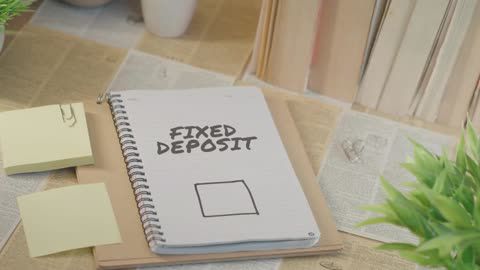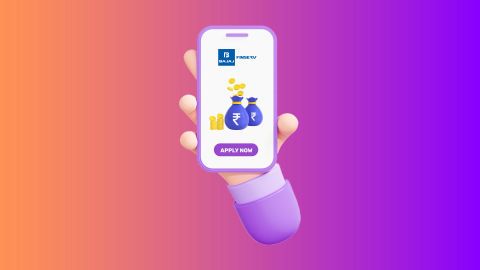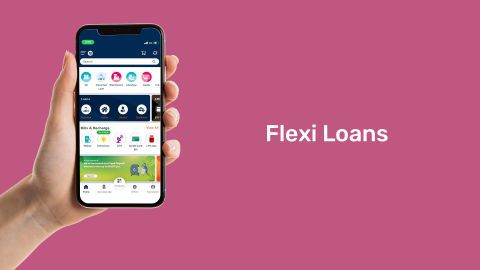Those looking to borrow money can choose from several financing options today. Thanks to a variety of finance options available today borrowing money has become easier. From renovating your home, managing your wedding expenses, or paying for higher education, there are financing options for every kind of goal. When it comes to borrowing money, two most common options include revolving credit and personal loans. Although each of these financing options may seem similar, they have their own benefits and differences.
Read more to understand the differences between revolving credit and personal loans.
What is revolving credit?
Revolving credit is a line of credit extended to you by financial institutions, such as banks or credit unions. A revolving credit facility allows you to borrow up to a set limit for a particular period. This is a flexible form of credit that is designed to give you quick access to the funds that you need. With this facility, you can utilise the credit as often as you like during the borrowing period. One great example of this type of a financing option is a credit card.
How does revolving credit work?
If lenders provide you with a revolving credit account, like a credit card, there will be a set credit limit on it. The credit limit is the maximum amount that you can use from that account. As you make use of the funds, your available credit limit is reduced. But every time you make a payment, your available credit is restored. Fees and interest charges on revolving credit could also affect the available credit. Revolving credit accounts are open-ended, meaning they do not have end dates for the credit. So, if your account is open, you can use the funds in it. Your minimum payment can change from month to month because it is frequently determined based on how much you owed at the time.
How revolving credit can help improve your credit score?
Understanding how revolving credit can improve your credit score is essential for maximizing its benefits while maintaining financial health.
- Making on-time payments: Timely payments are crucial for boosting your credit score, as they are the primary factor in its calculation. To avoid missing payments, consider setting up autopay for at least the minimum amount due on your revolving credit accounts.
- Building a credit history: A credit score can't exist without a credit history. Obtaining a credit card and consistently paying off the balance each month is an effective way to establish a record of responsible credit use. Credit cards provide lenders with insight into your debt management skills, as they allow you to control how much you charge and how much you repay each month.
- Diversifying your credit mix: Including both revolving and installment credit accounts in your portfolio can enhance your credit score. If you only have installment credit (like a student loan or car loan), adding a revolving credit account can diversify your credit mix and potentially improve your score.
Features of revolving credit
Understanding the features of revolving credit can help you leverage its benefits while managing potential risks effectively.
1. Flexible credit limits
Revolving credit provides a flexible borrowing limit that can be used repeatedly. You can draw from the available credit up to a specified limit, repay, and then borrow again. This flexibility allows for easy access to funds for various needs, such as emergencies or larger purchases. As you make payments, your available credit replenishes, offering ongoing access to money. This feature is beneficial for managing cash flow and adjusting borrowing based on your current financial situation. However, it requires careful management to avoid accumulating excessive debt and incurring high interest charges.
2. Minimum payment requirements
Revolving credit accounts require a minimum payment each billing cycle, typically a small percentage of the outstanding balance or a fixed amount. This ensures that your account remains active even if you can't pay off the full balance. While making only the minimum payment keeps your account in good standing, it often results in paying more interest over time and extending the repayment period. To minimize interest costs and reduce your balance faster, it's advisable to pay more than the minimum whenever possible. Regularly exceeding the minimum payment also helps improve your credit score.
3. Interest rates and fees
Revolving credit accounts come with varying interest rates and potential fees, impacting the overall cost of borrowing. Interest rates are often higher than those for installment loans and can be variable, changing with market conditions. Fees such as annual fees, late payment fees, and over-limit fees may also apply. To manage costs effectively, review your credit account’s terms, including the annual percentage rate (APR) and any associated fees. Paying off your balance in full each month can help avoid interest charges and manage fees, promoting better financial health and saving money.
4. Impact on credit score
Revolving credit affects your credit score through factors like credit utilization, payment history, and credit history length. Credit utilization, or the ratio of your credit card balance to your credit limit, should ideally be below 30% to maintain a healthy score. Timely payments positively influence your payment history, the most significant factor in your score. Additionally, keeping a revolving credit account over time can enhance your credit history length. Mismanaging revolving credit—such as high balances, late payments, or maxing out limits—can negatively impact your credit score, so responsible use is crucial.
Advantages and disadvantages of revolving credit
Read on to know the pros and cons of revolving credit:
Advantages of revolving credit
- Flexibility and convenience
Revolving credit offers significant flexibility by allowing you to borrow and repay funds up to a set credit limit repeatedly. This flexibility is ideal for managing cash flow, covering unexpected expenses, or making larger purchases. Unlike installment loans, which have fixed terms, revolving credit lets you adjust how much you borrow and repay based on your current needs. This convenience means you can access funds quickly without reapplying for credit, making it easier to handle varying financial situations and emergencies. - Helps build credit history
Using revolving credit responsibly can enhance your credit history and improve your credit score. By making timely payments and maintaining a low credit utilization ratio, you demonstrate to lenders that you can manage debt effectively. A strong credit history is beneficial for future financial endeavors, such as applying for loans or mortgages, as it reflects your reliability and creditworthiness. Consistent use of revolving credit, coupled with prudent management, contributes positively to your overall credit profile. - Reward programs and benefits
Many revolving credit accounts offer rewards programs, cash back, or other benefits such as travel perks, discounts, and purchase protections. These rewards can add value to your purchases and provide additional financial benefits beyond the basic functionality of credit. Depending on the credit card issuer, you might earn points for every dollar spent, which can be redeemed for various rewards, including gift cards or travel. Utilizing these benefits wisely can enhance your financial strategy and offer extra incentives for responsible credit use.
Disadvantages of revolving credit
- High interest rates
One of the primary drawbacks of revolving credit is its typically high interest rates compared to other types of credit. If you carry a balance from month to month, the accrued interest can add up quickly, making it costly to borrow. High-interest rates can significantly increase the total amount you repay over time, especially if you only make minimum payments. This can lead to a cycle of debt that’s difficult to break and can strain your financial resources if not managed carefully. - Potential for accumulating debt
Revolving credit can lead to accumulating significant debt if not used responsibly. The ease of borrowing up to your credit limit may encourage overspending, especially if you’re not diligent about tracking your expenditures and payments. High balances and frequent borrowing can quickly add up, leading to financial strain and potential difficulty in repaying what you owe. Managing credit wisely is essential to avoid falling into debt traps and facing financial challenges in the future. - Impact on credit score
While revolving credit can help build your credit history, it can also negatively impact your credit score if mismanaged. High credit utilization, late payments, or maxing out your credit limit can lower your score and affect your creditworthiness. Frequent or large balances can signal financial instability to lenders, potentially making it harder to secure favorable loan terms or credit in the future. It’s crucial to use revolving credit responsibly, maintain low balances, and make timely payments to protect and improve your credit score.
Types of revolving credit
Below are the types of revolving credit:
- Credit Cards: The most common form of revolving credit, allowing users to make purchases up to a predefined credit limit.
- Personal Lines of Credit: A flexible credit option with a preset limit, borrowers can access funds as needed and only pay interest on the amount used.
- Home Equity Lines of Credit (HELOC): Secured by the home's equity, HELOCs provide a revolving credit line for homeowners to use as needed.
- Business Lines of Credit: Similar to personal lines of credit but tailored for businesses, offering financial flexibility to cover operational expenses or unexpected costs.
- Overdraft Protection: Linked to a checking account, overdraft protection covers shortfalls, acting as a revolving credit line for emergencies.
How revolving credit can hurt your credit score?
Revolving credit, like credit cards, can impact credit scores based on credit utilization. Keeping balances low relative to credit limits positively influences scores. Consistent on-time payments are crucial. High balances and late payments can adversely affect scores, indicating potential financial risk to lenders.
Now that you know how revolving credit loan works, lets take a closer look at how a personal loan works.
What is a personal loan?
A personal loan is an unsecured unsecured credit option issued for a specific amount and period. When a personal loan is approved, you will receive the entire loan amount in your bank account, which you can utilise and repay over the selected tenure. Once you have paid off the loan, the loan account is closed, and you will need to apply for a new loan if you need additional funds in future.
What are the differences between revolving credit and personal loans?
1. Interest rates
One of the primary differences between revolving credit and a personal loan is the interest rate. Revolving credit usually comes with a higher interest rate than a personal loan. Because you can borrow and repay funds as often as you like, the interest charges on revolving credit can quickly add up, and the interest rate is likely to be higher to compensate the lender for the increased risk. However, personal loan with low interest rates are better than revolving credit.
2. Credit utilisation ratio
The credit utilisation ratio is another significant difference between revolving credit and personal loans. This ratio considers the amount of credit that you use from the total amount of available credit. With revolving credit, the amount of credit available to you stays the same, as you use and repay the funds within the selected tenure. This means that if you continuously borrow within the limit without repaying it can negatively impact your credit score.
Contrarily, with a personal loan, your credit utilisation ratio declines with each on-time payment you make, which can improve your credit score in the long run.
3. Credit account
Revolving credit accounts are active for as long as you want, as long as you are up-to-date with your payments and do not exceed your credit limit. This makes it a flexible option for short-term borrowing and repayment needs. Compared to personal loans, revolving credit is accessible and convenient to use. It allows you to withdraw funds as and when you need them without having to go through an application process each time.
4. End-use and repayment
Personal loans are best suited for larger purchases and expenses. On the other hand, revolving credit is suitable for small expenses, that can be repaid over a shorter period. Personal loans come with fixed interest rates, which means that you know exactly what you will be paying and for how long. You can also plan your repayments effectively and improve your credit score with a personal loan.
Both revolving credit and personal loans can be useful financial solutions, depending on your borrowing needs. Understanding the differences between these two financing options can help you make an informed decision on which one to choose. If you need flexibility and quick access to funds, revolving credit may be an ideal option. However, if you require a more structured repayment plan or a larger sum of money, a personal loan may be the more appropriate option for you.
With Bajaj Finance Limited, you can avail of a personal loan of up to Rs. 40 lakh, which can be repaid over a tenure Of up to 96 months. You can also use our personal loan EMI calculator to estimate your monthly EMIs in advance and plan your repayment journey wisely.




